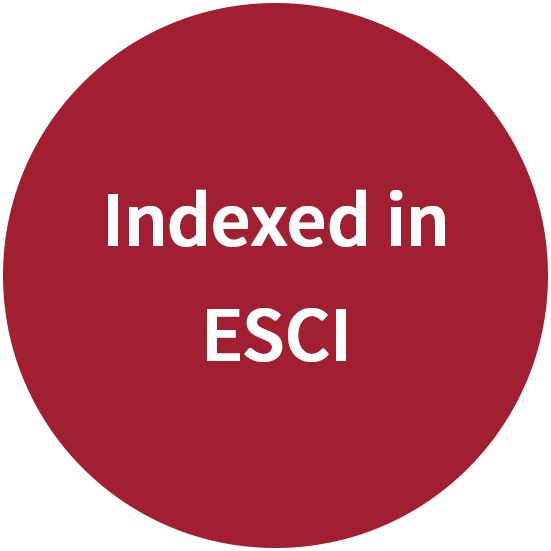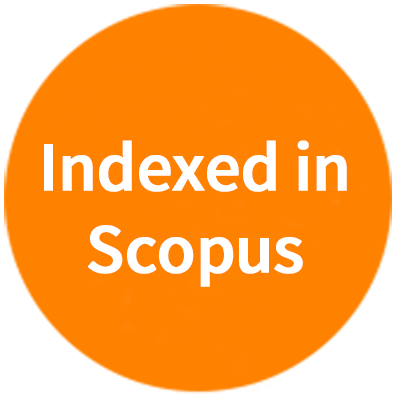REFERENCES
1. Zuberi SM, Wirrell E, Yozawitz E, et al. ILAE classification and definition of epilepsy syndromes with onset in neonates and infants: position statement by the ILAE task force on nosology and definitions. Epilepsia 2022;63:1349-97.
2. Cooper MS, Mcintosh A, Crompton DE, et al. Mortality in Dravet syndrome. Epilepsy Res 2016;128:43-7.
3. Shmuely S, Sisodiya SM, Gunning WB, Sander JW, Thijs RD. Mortality in dravet syndrome: a review. Epilepsy Behav 2016;64:69-74.
4. Wolff M, Cassé-Perrot C, Dravet C. Severe myoclonic epilepsy of infants (Dravet syndrome): natural history and neuropsychological findings. Epilepsia 2006;47 Suppl 2:45-8.
5. Nabbout R, Chemaly N, Chipaux M, et al. Encephalopathy in children with Dravet syndrome is not a pure consequence of epilepsy. Orphanet J Rare Dis 2013;8:176.
7. Darra F, Battaglia D, Dravet C, et al. Dravet syndrome: early electroclinical findings and long-term outcome in adolescents and adults. Epilepsia 2019;60 Suppl 3:S49-58.
8. Jansson JS, Hallböök T, Reilly C. Intellectual functioning and behavior in Dravet syndrome: a systematic review. Epilepsy Behav 2020;108:107079.
9. Brown A, Arpone M, Schneider AL, Micallef S, Anderson VA, Scheffer IE. Cognitive, behavioral, and social functioning in children and adults with Dravet syndrome. Epilepsy Behav 2020;112:107319.
10. Strzelczyk A, Lagae L, Wilmshurst JM, et al. Dravet syndrome: a systematic literature review of the illness burden. Epilepsia Open 2023;8:1256-70.
11. Depienne C, Trouillard O, Saint-Martin C, et al. Spectrum of SCN1A gene mutations associated with Dravet syndrome: analysis of 333 patients. J Med Genet 2009;46:183-91.
12. Claes L, Del-Favero J, Ceulemans B, Lagae L, Van Broeckhoven C, De Jonghe P. De novo mutations in the sodium-channel gene SCN1A cause severe myoclonic epilepsy of infancy. Am J Hum Genet 2001;68:1327-32.
13. Sun H, Zhang Y, Liu X, et al. Analysis of SCN1A mutation and parental origin in patients with Dravet syndrome. J Hum Genet 2010;55:421-7.
14. Brunklaus A, Ellis R, Reavey E, Semsarian C, Zuberi SM. Genotype phenotype associations across the voltage-gated sodium channel family. J Med Genet 2014;51:650-8.
15. Xu X, Yang X, Wu Q, et al. Amplicon resequencing identified parental mosaicism for approximately 10% of “de novo” SCN1A mutations in children with Dravet syndrome. Hum Mutat 2015;36:861-72.
16. Brunklaus A, Feng T, Brünger T, et al. Gene variant effects across sodium channelopathies predict function and guide precision therapy. Brain 2022;145:4275-86.
17. Yu FH, Mantegazza M, Westenbroek RE, et al. Reduced sodium current in GABAergic interneurons in a mouse model of severe myoclonic epilepsy in infancy. Nat Neurosci 2006;9:1142-9.
18. Ogiwara I, Miyamoto H, Morita N, et al. Nav1.1 localizes to axons of parvalbumin-positive inhibitory interneurons: a circuit basis for epileptic seizures in mice carrying an Scn1a gene mutation. J Neurosci 2007;27:5903-14.
19. Tai C, Abe Y, Westenbroek RE, Scheuer T, Catterall WA. Impaired excitability of somatostatin- and parvalbumin-expressing cortical interneurons in a mouse model of Dravet syndrome. Proc Natl Acad Sci USA 2014;111:E3139-48.
20. Cheah CS, Yu FH, Westenbroek RE, et al. Specific deletion of Nav1.1 sodium channels in inhibitory interneurons causes seizures and premature death in a mouse model of Dravet syndrome. Proc Natl Acad Sci USA 2012;109:14646-51.
21. Dutton SB, Makinson CD, Papale LA, et al. Preferential inactivation of Scn1a in parvalbumin interneurons increases seizure susceptibility. Neurobiol Dis 2013;49:211-20.
22. Ogiwara I, Iwasato T, Miyamoto H, et al. Nav1.1 haploinsufficiency in excitatory neurons ameliorates seizure-associated sudden death in a mouse model of Dravet syndrome. Hum Mol Genet 2013;22:4784-804.
23. Rubinstein M, Han S, Tai C, et al. Dissecting the phenotypes of Dravet syndrome by gene deletion. Brain 2015;138:2219-33.
24. Stern WM, Sander JW, Rothwell JC, Sisodiya SM. Impaired intracortical inhibition demonstrated in vivo in people with Dravet syndrome. Neurology 2017;88:1659-65.
25. Du J, Simmons S, Brunklaus A, et al. Differential excitatory vs inhibitory SCN expression at single cell level regulates brain sodium channel function in neurodevelopmental disorders. Eur J Paediatr Neurol 2020;24:129-33.
26. Ito S, Ogiwara I, Yamada K, et al. Mouse with Nav1.1 haploinsufficiency, a model for Dravet syndrome, exhibits lowered sociability and learning impairment. Neurobiol Dis 2013;49:29-40.
27. Almog Y, Fadila S, Brusel M, Mavashov A, Anderson K, Rubinstein M. Developmental alterations in firing properties of hippocampal CA1 inhibitory and excitatory neurons in a mouse model of Dravet syndrome. Neurobiol Dis 2021;148:105209.
28. Yamagata T, Ogiwara I, Tatsukawa T, et al. Scn1a-GFP transgenic mouse revealed Nav1.1 expression in neocortical pyramidal tract projection neurons. Elife 2023;12:e87495.
29. Jones SP, O’Neill N, Muggeo S, Colasante G, Kullmann DM, Lignani G. Developmental instability of CA1 pyramidal cells in Dravet syndrome. BioRXiv 2022. Available from: https://www.biorxiv.org/content/10.1101/2022.09.12.507264v1 [Last accessed on 1 Jul 2024].
30. Goff KM, Goldberg EM. Vasoactive intestinal peptide-expressing interneurons are impaired in a mouse model of Dravet syndrome. Elife 2019;8:e46846.
31. Goff KM, Liebergall SR, Jiang E, Somarowthu A, Goldberg EM. VIP interneuron impairment promotes in vivo circuit dysfunction and autism-related behaviors in Dravet syndrome. Cell Rep 2023;42:112628.
32. Favero M, Sotuyo NP, Lopez E, Kearney JA, Goldberg EM. A transient developmental window of fast-spiking interneuron dysfunction in a mouse model of Dravet syndrome. J Neurosci 2018;38:7912-27.
33. Kaneko K, Currin CB, Goff KM, et al. Developmentally regulated impairment of parvalbumin interneuron synaptic transmission in an experimental model of Dravet syndrome. Cell Rep 2022;38:110580.
34. Mattis J, Somarowthu A, Goff KM, et al. Corticohippocampal circuit dysfunction in a mouse model of Dravet syndrome. Elife 2022;11:e69293.
35. Engel Jr J. A proposed diagnostic scheme for people with epileptic seizures and with epilepsy: report of the ILAE task force on classification and terminology. Epilepsia 2001;42:796-803.
36. Chipaux M, Villeneuve N, Sabouraud P, et al. Unusual consequences of status epilepticus in Dravet syndrome. Seizure 2010;19:190-4.
37. de Lange IM, Gunning B, Sonsma ACM, et al. Influence of contraindicated medication use on cognitive outcome in Dravet syndrome and age at first afebrile seizure as a clinical predictor in SCN1A-related seizure phenotypes. Epilepsia 2018;59:1154-65.
38. Feng T, Makiello P, Dunwoody B, et al. Long-term predictors of developmental outcome and disease burden in SCN1A-positive Dravet syndrome. Brain Commun 2024;6:fcae004.
39. Catarino CB, Liu JY, Liagkouras I, et al. Dravet syndrome as epileptic encephalopathy: evidence from long-term course and neuropathology. Brain 2011;134:2982-3010.
40. Brunklaus A, Zuberi SM. Dravet syndrome-from epileptic encephalopathy to channelopathy. Epilepsia 2014;55:979-84.
41. Gataullina S, Dulac O. Is epilepsy the cause of comorbidities in Dravet syndrome? Dev Med Child Neurol 2018;60:8.
42. Ragona F. Cognitive development in children with Dravet syndrome. Epilepsia 2011;52 Suppl 2:39-43.
43. Wirrell EC, Nabbout R. Recent advances in the drug treatment of Dravet syndrome. CNS Drugs 2019;33:867-81.
44. Perry MS, Scheffer IE, Sullivan J, et al. Severe communication delays are independent of seizure burden and persist despite contemporary treatments in SCN1A+ Dravet syndrome: insights from the ENVISION natural history study. Epilepsia 2024;65:322-37.
45. Sullivan J, Wirrell EC. Dravet syndrome as an example of precision medicine in epilepsy. Epilepsy Curr 2023;23:4-7.
46. Perez J, Chiron C, Musial C, et al. Stiripentol: efficacy and tolerability in children with epilepsy. Epilepsia 1999;40:1618-26.
47. Chiron C, Marchand MC, Tran A, et al. Stiripentol in severe myoclonic epilepsy in infancy: a randomised placebo-controlled syndrome-dedicated trial. Lancet 2000;356:1638-42.
48. Inoue Y, Ohtsuka Y. STP-1 Study Group. Long-term safety and efficacy of stiripentol for the treatment of Dravet syndrome: a multicenter, open-label study in Japan. Epilepsy Res 2015;113:90-7.
49. Devinsky O, Nabbout R, Miller I, et al. Long-term cannabidiol treatment in patients with Dravet syndrome: an open-label extension trial. Epilepsia 2019;60:294-302.
50. Miller I, Scheffer IE, Gunning B, et al. Dose-ranging effect of adjunctive oral cannabidiol vs placebo on convulsive seizure frequency in Dravet syndrome: a randomized clinical trial. JAMA Neurol 2020;77:613-21.
51. Lagae L, Sullivan J, Knupp K, et al. Fenfluramine hydrochloride for the treatment of seizures in Dravet syndrome: a randomised, double-blind, placebo-controlled trial. Lancet 2019;394:2243-54.
52. Schoonjans AS, Ceulemans B. A critical evaluation of fenfluramine hydrochloride for the treatment of Dravet syndrome. Expert Rev Neurother 2022;22:351-64.
53. Sullivan J, Lagae L, Cross JH, et al. Fenfluramine in the treatment of Dravet syndrome: results of a third randomized, placebo-controlled clinical trial. Epilepsia 2023;64:2653-66.
54. Han S, Tai C, Westenbroek RE, et al. Autistic-like behaviour in Scn1a+/− mice and rescue by enhanced GABA-mediated neurotransmission. Nature 2012;489:385-90.
55. Bender AC, Natola H, Ndong C, Holmes GL, Scott RC, Lenck-Santini PP. Focal Scn1a knockdown induces cognitive impairment without seizures. Neurobiol Dis 2013;54:297-307.
56. Bender AC, Luikart BW, Lenck-Santini PP. Cognitive deficits associated with Nav1.1 alterations: involvement of neuronal firing dynamics and oscillations. PLoS One 2016;11:e0151538.
57. Stein RE, Kaplan JS, Li J, Catterall WA. Hippocampal deletion of NaV1.1 channels in mice causes thermal seizures and cognitive deficit characteristic of Dravet syndrome. Proc Natl Acad Sci USA 2019;116:16571-6.
58. Jansen NA, Dehghani A, Breukel C, Tolner EA, van den Maagdenberg AMJM. Focal and generalized seizure activity after local hippocampal or cortical ablation of NaV1.1 channels in mice. Epilepsia 2020;61:e30-6.
59. Jansen NA, Perez C, Schenke M, et al. Impaired θ-γ coupling indicates inhibitory dysfunction and seizure risk in a Dravet syndrome mouse model. J Neurosci 2021;41:524-37.
60. Di Berardino C, Mainardi M, Brusco S, Benvenuto E, Broccoli V, Colasante G. Temporal manipulation of the Scn1a gene reveals its essential role in adult brain function. Brain 2024;147:1216-30.
61. Riga MS, Pérez-Fernández M, Miquel-Rio L, et al. Scn1a haploinsufficiency in the prefrontal cortex engages to cognitive impairment and depressive phenotype. Brain 2024:awae167.
62. Salgueiro-Pereira AR, Duprat F, Pousinha PA, et al. A two-hit story: seizures and genetic mutation interaction sets phenotype severity in SCN1A epilepsies. Neurobiol Dis 2019;125:31-44.
63. Catterall WA. Dravet syndrome: a sodium channel interneuronopathy. Curr Opin Physiol 2018;2:42-50.
64. Mistry AM, Thompson CH, Miller AR, Vanoye CG, George AL Jr, Kearney JA. Strain- and age-dependent hippocampal neuron sodium currents correlate with epilepsy severity in Dravet syndrome mice. Neurobiol Dis 2014;65:1-11.
65. Tsai MS, Lee ML, Chang CY, et al. Functional and structural deficits of the dentate gyrus network coincide with emerging spontaneous seizures in an Scn1a mutant Dravet syndrome model during development. Neurobiol Dis 2015;77:35-48.
66. Valassina N, Brusco S, Salamone A, et al. Scn1a gene reactivation after symptom onset rescues pathological phenotypes in a mouse model of Dravet syndrome. Nat Commun 2022;13:161.
67. Rubinstein M, Westenbroek RE, Yu FH, Jones CJ, Scheuer T, Catterall WA. Genetic background modulates impaired excitability of inhibitory neurons in a mouse model of Dravet syndrome. Neurobiol Dis 2015;73:106-17.
68. De Stasi AM, Farisello P, Marcon I, et al. Unaltered network activity and interneuronal firing during spontaneous cortical dynamics in vivo in a mouse model of severe myoclonic epilepsy of infancy. Cereb Cortex 2016;26:1778-94.
69. Almog Y, Mavashov A, Brusel M, Rubinstein M. Functional investigation of a neuronal microcircuit in the CA1 area of the hippocampus reveals synaptic dysfunction in Dravet syndrome mice. Front Mol Neurosci 2022;15:823640.
70. Hawkins NA, Calhoun JD, Huffman AM, Kearney JA. Gene expression profiling in a mouse model of Dravet syndrome. Exp Neurol 2019;311:247-56.
71. Shi X, He W, Guo S, et al. RNA-seq analysis of the SCN1A-KO model based on CRISPR/Cas9 genome editing technology. Neuroscience 2019;398:1-11.
72. Mantegazza M, Broccoli V. SCN1A/NaV1.1 channelopathies: mechanisms in expression systems, animal models, and human iPSC models. Epilepsia 2019;60 Suppl 3:S25-38.
73. Miljanovic N, Hauck SM, van Dijk RM, Di Liberto V, Rezaei A, Potschka H. Proteomic signature of the Dravet syndrome in the genetic Scn1a-A1783V mouse model. Neurobiol Dis 2021;157:105423.
74. Isom LL, Knupp KG. Dravet syndrome: novel approaches for the most common genetic epilepsy. Neurotherapeutics 2021;18:1524-34.
75. Lubroth P, Colasante G, Lignani G. In vivo genome editing therapeutic approaches for neurological disorders: where are we in the translational pipeline? Front Neurosci 2021;15:632522.
76. Carpenter JC, Lignani G. Gene editing and modulation: the holy grail for the genetic epilepsies? Neurotherapeutics 2021;18:1515-23.
77. Chilcott E, Díaz JA, Bertram C, Berti M, Karda R. Genetic therapeutic advancements for Dravet syndrome. Epilepsy Behav 2022;132:108741.
78. Higurashi N, Broccoli V, Hirose S. Genetics and gene therapy in Dravet syndrome. Epilepsy Behav 2022;131:108043.
79. Ling Q, Herstine JA, Bradbury A, Gray SJ. AAV-based in vivo gene therapy for neurological disorders. Nat Rev Drug Discov 2023;22:789-806.
80. Colasante G, Lignani G, Brusco S, et al. dCas9-based Scn1a gene activation restores inhibitory interneuron excitability and attenuates seizures in Dravet syndrome mice. Mol Ther 2020;28:235-53.
81. Yamagata T, Raveau M, Kobayashi K, et al. CRISPR/dCas9-based Scn1a gene activation in inhibitory neurons ameliorates epileptic and behavioral phenotypes of Dravet syndrome model mice. Neurobiol Dis 2020;141:104954.
82. Sera T. Zinc-finger-based artificial transcription factors and their applications. Adv Drug Deliv Rev 2009;61:513-26.
83. Tanenhaus A, Stowe T, Young A, et al. Cell-selective adeno-associated virus-mediated SCN1A gene regulation therapy rescues mortality and seizure phenotypes in a dravet syndrome mouse model and is well tolerated in nonhuman primates. Hum Gene Ther 2022;33:579-97.
84. Han Z, Chen C, Christiansen A, et al. Antisense oligonucleotides increase Scn1a expression and reduce seizures and SUDEP incidence in a mouse model of Dravet syndrome. Sci Transl Med 2020;12:eaaz6100.
85. Carvill GL, Engel KL, Ramamurthy A, et al. Aberrant inclusion of a poison exon causes Dravet syndrome and related SCN1A-associated genetic epilepsies. Am J Hum Genet 2018;103:1022-9.
86. Lim KH, Han Z, Jeon HY, et al. Antisense oligonucleotide modulation of non-productive alternative splicing upregulates gene expression. Nat Commun 2020;11:3501.
87. Sparber P, Bychkov I, Pyankov D, Skoblov M. Functional investigation of SCN1A deep-intronic variants activating poison exons inclusion. Hum Genet 2023;142:1043-53.
88. Avoli M, Chen LY, Di Cristo G, et al. Ligand-gated mechanisms leading to ictogenesis in focal epileptic disorders. Neurobiol Dis 2023;180:106097.
89. Christiansen A, Meena, Ravipaty S, Han Z, Ji S, Liau G. TANGO oligonucleotides for the treatment of Dravet syndrome: safety, biodistribution and pharmacology in the non-human prima. 2019. Available from: https://www.stoketherapeutics.com/wp-content/uploads/AES2019_cyno_pharmacology_poster_2.pdf [Last accessed on 1 Jul 2024].
90. Stoke Therapeutics. Stoke therapeutics announces positive new safety & efficacy data from patients treated with STK-001 in the phase 1/2a studies (MONARCH & ADMIRAL) and the swallowtail open-label extension (OLE) study in children and adolescents with Dravet syndrome. 2023. Available from: https://investor.stoketherapeutics.com/news-releases/news-release-details/stoke-therapeutics-announces-positive-new-safety-efficacy-data/ [Last accessed on 1 Jul 2024].
91. Stoke Therapeutics. Stoke therapeutics announces landmark new data that support the potential for STK-001 to be the first disease-modifying medicine for the treatment of patients with Dravet syndrome. Available from: https://investor.stoketherapeutics.com/node/9156/pdf [Last accessed on 1 Jul 2024].
92. Cross JH, Laux L, Sullivan J, et al. Monarch and admiral: phase 1/2a studies in US and UK investigating safety and drug exposure of STK-001, an antisense oligonucleotide (ASO), in children and adolescents with Dravet syndrome (DS). 2023. Available from: https://aesnet.org/abstractslisting/monarch-and-admiral-phase-1-2a-studies-in-us-and-uk-investigating-safety-and-drug-exposure-of-stk-001-an-antisense-oligonucleotide-aso-in-children-and-adolescents-with-dravet-syndrome-ds [Last accessed on 1 Jul 2024].
93. Desurkar A, Perry MS, Sullivan J, et al. Swallowtail and longwing: open-label extension (OLE) studies for children and adolescents with Dravet syndrome (DS) who previously participated in a study of antisense oligonucleotide (ASO) STK-001. 2023. Available from: https://www.stoketherapeutics.com/wp-content/uploads/SWALLOWTAIL-LONGWING_Open-Label_Extension_-Studies_Children_and_Adolescents_with_Dravet_Syndrome_who_Previously_Participated_in_Study_of_Antisense.pdf [Last accessed on 1 Jul 2024].
94. Stoke Therapeutics. Analysis of STK-001 for the treatment of Dravet syndrome. 2024. Available from: https://investor.stoketherapeutics.com/events/event-details/analysis-stk-001-treatment-dravet-syndrome/ [Last accessed on 1 Jul 2024].
95. Sullivan J, Wirrell E, Knupp KG, et al. Adaptive functioning and neurodevelopment in patients with Dravet syndrome: 12-month interim analysis of the BUTTERFLY observational study. Epilepsy Behav 2024;151:109604.
96. Mora-Jimenez L, Valencia M, Sanchez-Carpintero R, et al. Transfer of SCN1A to the brain of adolescent mouse model of Dravet syndrome improves epileptic, motor, and behavioral manifestations. Mol Ther Nucleic Acids 2021;25:585-602.
97. Fadila S, Beucher B, Dopeso-Reyes IG, et al. Viral vector-mediated expression of Nav1.1, after seizure onset, reduces epilepsy in mice with Dravet syndrome. J Clin Invest 2023;133:e159316.
98. Mich JK, Ryu J, Wei AD, et al. AAV-mediated interneuron-specific gene replacement for Dravet syndrome. BioRXiv 2023. Available from: https://www.biorxiv.org/content/10.1101/2023.12.15.571820v1 [Last accessed on 1 Jul 2024].
99. Del Rio D, Beucher B, Lavigne M, et al. CAV-2 vector development and gene transfer in the central and peripheral nervous systems. Front Mol Neurosci 2019;12:71.
100. Ricobaraza A, Gonzalez-Aparicio M, Mora-Jimenez L, Lumbreras S, Hernandez-Alcoceba R. High-capacity adenoviral vectors: expanding the scope of gene therapy. Int J Mol Sci 2020;21:3643.
101. Sakkaki S, Barrière S, Bender AC, Scott RC, Lenck-Santini PP. Focal dorsal hippocampal Nav1.1 knock down alters place cell temporal coordination and spatial behavior. Cereb Cortex 2020;30:5049-66.
102. Ricobaraza A, Bunuales M, Gonzalez-Aparicio M, et al. Preferential expression of SCN1A in GABAergic neurons improves survival and epileptic phenotype in a mouse model of Dravet syndrome. J Mol Med 2023;101:1587-601.
103. Mennechet FJD, Paris O, Ouoba AR, et al. A review of 65 years of human adenovirus seroprevalence. Expert Rev Vaccines 2019;18:597-613.
104. Soudais C, Laplace-Builhe C, Kissa K, Kremer EJ. Preferential transduction of neurons by canine adenovirus vectors and their efficient retrograde transport in vivo. FASEB J 2001;15:2283-5.
105. Salinas S, Bilsland LG, Henaff D, et al. CAR-associated vesicular transport of an adenovirus in motor neuron axons. PLoS Pathog 2009;5:e1000442.
106. Stevens AJ, Brown ZZ, Shah NH, Sekar G, Cowburn D, Muir TW. Design of a split intein with exceptional protein splicing activity. J Am Chem Soc 2016;138:2162-5.
107. Hensch TK. Critical period plasticity in local cortical circuits. Nat Rev Neurosci 2005;6:877-88.
108. Hübener M, Bonhoeffer T. Neuronal plasticity: beyond the critical period. Cell 2014;159:727-37.
109. Leslie JH, Nedivi E. Activity-regulated genes as mediators of neural circuit plasticity. Prog Neurobiol 2011;94:223-37.
110. Schaefer N, Rotermund C, Blumrich EM, et al. The malleable brain: plasticity of neural circuits and behavior - a review from students to students. J Neurochem 2017;142:790-811.








